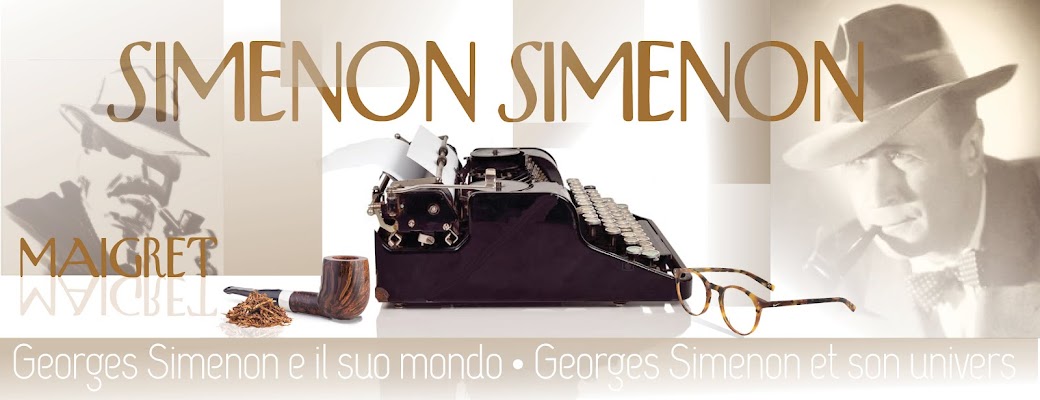Un modello della Chacom, dedicato al commissario.
UNE PIPE APPELÉ MAIGRET
Un modèle de la française Chacom, dédié au commissaire
A PIPE CALLED MAIGRET
A model of the French Chacom, dedicated to the inspector
Chacom Maigret Sablée. Eccola! Il modello che la celebre fabbrica di pipe di St.Claude (Francia), fondata quasi duecento anni fa', ha voluto chiamare con il nome del commissario simenoniano.
E' un modello massiccio, lungo quasi quindici centimetri. Spartano, con un cannello nero semplice e rastremato, guarnito da una vera metallica, senza fronzoli. Il fornello é di circa sei centimetri e con un diametro di oltre quattro centimetri. Per chi non è esperto di pipe, o non è un fumatore, diremo che queste misure identificano una pipa di dimensioni importanti. Insomma la pipa adatta alla grossa mano di Maigret. Altro elemento che la rende davvero "la pipa di Maigret" é la radica utilizzata, quella con finitura "sabbiata", cioé ruvida, una caratteristica apprezzata da molti, cui piace tenere saldamente in mano un fornello ben caldo e di buona presa. Peso circa settanta grammi.
Finita questa specie di scheda antropometrica... pensiamola in mano a Maigret. Mentre passeggia lungo la Senna. Oppure quando, riuscito a prendere un bus con la piattaforma esterna, si bea osservando il paesaggio urbano che passa, sbuffando nuvole di fumo, magari ripensando al caso di turno. O ancora quando nel suo ufficio organizza il lavoro con i suoi ispettori o durante i lunghi interrogatori notturni...
Insomma una pipa del genere costituisce il modello preferito dal commissario che ne fa una sua amica fedele, sia quando è stretta dai suoi denti, sia quando riposa (raramente) nelle profonde tasche del suo pesante cappotto e anche quando giace sul piano della sua scrivania, mischiata alle altre pipe, a carte di tutti i tipi, agli sfrizzoli di tabacco e alla cenere. Una pipa molto robusta e in grado di sopportare gli sbattimenti sul tacco delle scarpe, quando Maigret vuole vuotarla in fretta dalla cenere bruciata.
In più una pipa del genere è l'ideale per fumare quel tabacco cosiddetto "gris", un trinciato medio di aroma robusto, non aromatico e allora venduto in pacchetti cubici da venti grammi (curiosità: lo "Scaferlati Caporal" era un prodotto della Seita, società nazionale francese cui apparteneva anche una marca di calvados, un'altra passione di Maigret).
Insomma tutti gli appassionati lettori delle inchieste del commissario e contemporaneamente forti fumatori di pipa, hanno l'occasione di fumarla, sognando di provare le stesse emozioni che Simenon descrive nei suoi romanzi. Certo questo modello, molto classico, è prodotto da diverse marche di pipa, ma questa è francese e potrebbe essere proprio la stessa che usava Maigret. Anche se il condizionale é d'obbligo, perché lo scrittore non cita mai la marca (come d'altronde ha fatto con il calvados). Ma una volta trovata e sopratutto una volta trovato lo Scaferlati Caporal (cosa non facile in Italia, ma ormai con l'e-commerce non dovrebbe essere difficile) si può accenderla, fumare e, magari ad occhi chiusi, pensare di mettersi nei panni del commissario. (m.t.)







